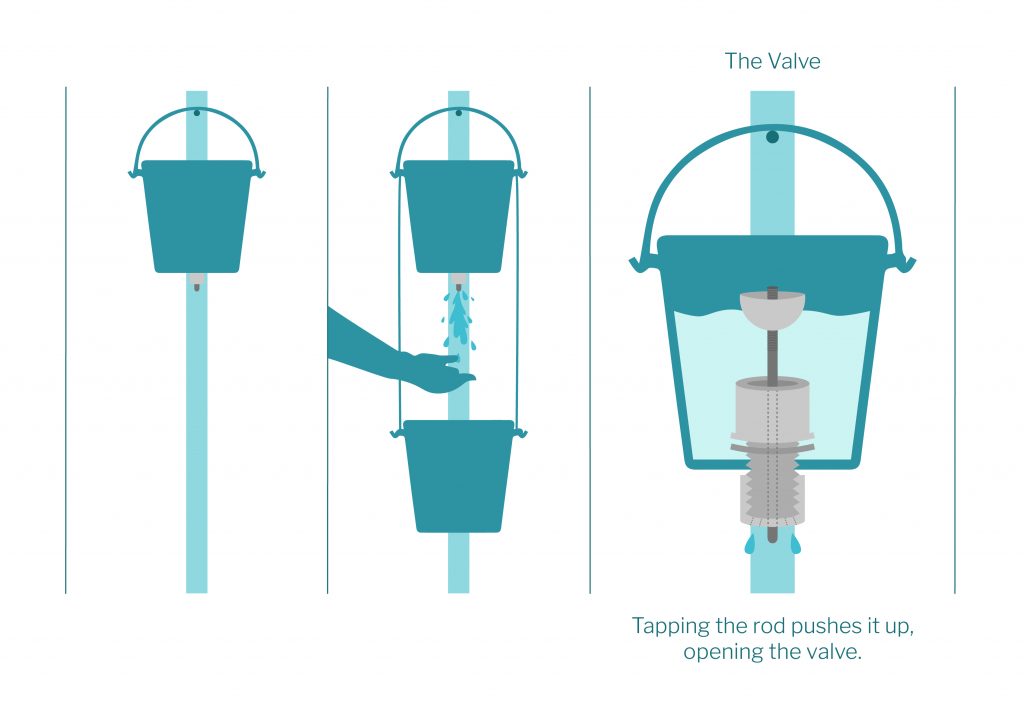Handwashing is the simplest way to prevent illness by averting harmful pathogens from entering the body. Simple handwashing devices can be made readily available from locally sourced material at virtually no cost. Studies have shown that handwashing with soap, particularly after contact with faeces, can reduce diarrhoeal infections by up to 47%. However, behavioural changes are required to promote handwashing, making it an essential part of an individual’s daily routine. In addition to this, maintenance of the devices is required to keep them attractive for their consumer and in turn promoting use. Some basic handwashing solutions are shown below, with design-ability ratings outlined. These handwashing designs offer a short term and cheap alternative to piped water.
Container with A Hole In
Does what it says on the tin. A simple container with a hole in, allowing handwashing without contamination.

- Hand washing is only hygienic if water is not contaminated before or during use
- Container requires refilling before use
- Multiple holes in the container required for satisfactory use
- Drainage required, user can get wet feet
- Material can often be sourced cost free
- Simple operational use
- Highly reliable

Tippy Tap Hand Sink
A tippy tap style hand sink can be made in several ways, with the most common way being a container (i.e. a large can, bottle or pot) and drilling a hole near the top. A string and a pedal are attached at the top of the container allowing the water to flow out when pulled. When released the container returns to its initial position, stopping excessive water discharge.

- Foot pedals preferred to hand pedals as they reduce contamination
- Requires drainage
- Fixed height
- Very low cost
- Built and maintained easily
- Simple operational use
- Highly reliable

Tap Up Hand Sink
Developed by Mathew Lippincott for outdoor festivals in the Pacific Northwest of the US in 2011, A bucket with a valve at the bottom can also serve as a hand sink. The Tap Up Hand Sink allows for the discharge of water at the push of a button, with full drainage and minimal leakage.

- Water outlet is continuously washed during usage
- Frequent refilling required
- Outlet often made of copper or brass to prevent microbes settling
- Four or more holes allow for satisfactory discharge of water
- Cheap to construct ~ £5
- Requires a support structure
- Built and maintained easily, however more advanced than the previous two
- Simple operational use
- High reliability


